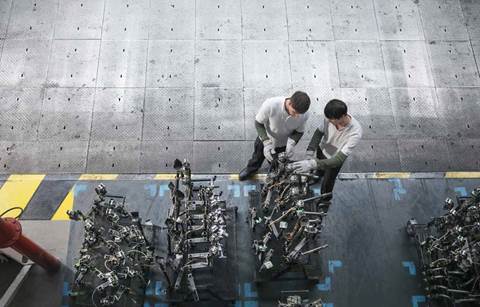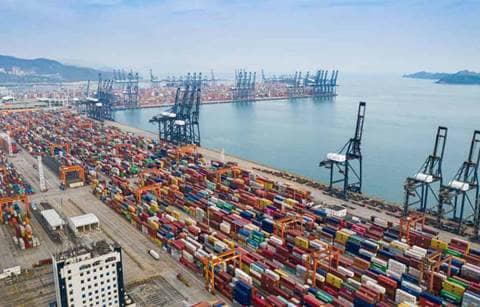Systemic Change: The Key to Long-Term, Sustainable Growth
Organizations often struggle with growth, particularly in times of high demand. The default path is to meet growing demand through investments in additional staff, new equipment, new technology, and additional inventories — but that runs the risk of accumulating unnecessary assets. Investments should be made only after business processes are running as efficiently and effectively as possible; and purchases should be made only if justified by a life cycle cost benefit analysis.
It’s important to achieve growth in a way that optimizes the business for the long term — in a way that’s sustainable, including through future downturns. Here are a few important factors to consider to ensure efficient business processes and sustainable growth.
The Role of Leadership
Company leadership must communicate a clearly articulated vision of how near- and long-term growth will be achieved. If the management team is not aligned, they can’t expect the rest of the organization to be. The vision should be customer centric and focused on continuous improvement. A continuous-improvement culture isn’t established through programs or initiatives but rather through leadership’s behaviors and actions. Leadership must not tolerate waste or inefficiency; this will set the tone for the rest of the organization.
There must also be a plan to deploy the vision and strategy. Plans at the department level should align to focus departments on the same goals for the business. At the individual level, people should have a clear line of sight to the customer so they understand their contributions in supporting the vision.
Leaders must then lead by being involved in plan deployment. Progress and success must be measured with regular feedback loops allowing leaders to communicate their expectations for actions to keep the plan on track.
Standard Work
Creating standard work and designing work systems in every corner of the business is the essence of productivity and continuous improvement. It’s important to understand the paradox — the rigidness of standard work creates the flexibility and creativity to improve processes. It’s always easier to improve a stable process than one that’s performed differently by each person performing the work. It signals that there’s one best way to perform a process today.
Does this mean we want people to just work and not think? Quite the contrary; we want people to think about how to improve. But improving a nonstandardized, uncontrolled process is like aiming at a moving target. If a business process is standardized, it’s easier to teach people how to do the work and control the outcome.
A Systematic Approach to Operational Excellence
A continuous improvement culture is not established through programs or initiatives. So often businesses adopt a particular continuous improvement methodology only to jump to the next popular program du jour. What’s important is to select scientific methods for problem solving and improvement and establish internal experts through training and hands-on experience throughout the organization. Cost-cutting habits evolve into continuous improvement skills. Once these skills become institutionalized elements of the business, they will become a way of life, and improvements will accelerate.
Talent Development and Retention
Demographic shifts and other factors are depleting some highly experienced and skilled staff. The responsibilities of those that depart are often absorbed by others in the organization. This “blending” of roles over time leads to significant talent gaps in organizations as well as opportunities to properly align current roles with the highest and best use of skills.
Retaining key talent is an increasing concern for companies. Top talent may begin to explore outside career opportunities as recruiters identify these high performers. Therefore, an intense focus on developing and retaining talent needs to be top of mind. Through understanding the vision and the team required to execute it, the first step should be to assess the current talent and identify existing gaps. Leadership should then develop a plan to retain, recruit, and develop key talent. Organizations that don’t address this topic are going to find themselves far behind their competition.
Aligned Metrics
It’s critical to establish metrics that tie to the vision and connect to the end customer. The corporate metrics should then cascade through the rest of the organization by establishing department and individual contributor metrics that align with the corporate vision and metrics. Organizations often take a siloed, departmental approach when defining metrics. The result is competing objectives that have a negative impact on the organization as a whole. The key to avoid such pitfalls is to establish aligned metrics that are cross-functional and drive toward the companywide goals and vision. Organizations with aligned goals supporting their customer-focused vision usually realize substantially favorable results.
Ultimately, metrics should be designed to drive accountability and desired behaviors. This can be deployed through an effective performance management system that includes compensation and recognition programs, which promote the notion of celebrating successes and having fun along the way.
The Choice Is Yours
Businesses can persist in the belief that the only way to increase growth is to invest in capital and human resources, or they can take a systemic approach to growth through continuous improvement and operational excellence. Results will be measured in sustainable reductions in waste and non-value work that boost the bottom line.
As the economy has recovered, organizations have experienced varying degrees of difficulty ramping up to meet pent-up demand. The default path is to meet growing demand through investments in additional staff, new equipment, new technology, and additional inventories — but that runs the risk of accumulating unnecessary assets. Investments should be made only after business processes are running as efficiently and effectively as possible; purchases should be made only if justified by a life cycle cost benefit analysis.
It’s important to achieve growth in a way that optimizes the business for the long term — in a way that’s sustainable, including through the next downturn. The challenge is to grow and rebuild without letting inefficient and wasteful habits creep back in. Here are a few important factors to consider to ensure efficient business processes and sustainable growth.
The Role of Leadership
Company leadership must communicate a clearly articulated vision of how near- and long-term growth will be achieved. If the management team is not aligned, they can’t expect the rest of the organization to be. The vision should be customer centric and focused on continuous improvement. A continuous-improvement culture isn’t established through programs or initiatives but rather through leadership’s behaviors and actions. Leadership must not tolerate waste or inefficiency; this will set the tone for the rest of the organization.
There must also be a plan to deploy the vision and strategy. Plans at the department level should align to focus departments on the same goals for the business. At the individual level, people should have a clear line of sight to the customer so they understand their contributions in supporting the vision.
Leaders must then lead by being involved in plan deployment. Progress and success must be measured with regular feedback loops allowing leaders to communicate their expectations for actions to keep the plan on track.
Standard Work
Creating standard work and designing work systems in every corner of the business is the essence of productivity and continuous improvement. It’s important to understand the paradox — the rigidness of standard work creates the flexibility and creativity to improve processes. It’s always easier to improve a stable process than one that’s performed differently by each person performing the work. It captures the notion that there’s one best way to perform a process today.
Does this mean we want people to just work and not think? Quite the contrary; we want people to think about how to improve. But improving a nonstandardized, uncontrolled process is like aiming at a moving target. If a business process is standardized, it’s easier to teach people how to do the work and control the outcome.
A Systematic Approach to Operational Excellence
A continuous improvement culture is not established through programs or initiatives. So often businesses adopt a particular continuous improvement methodology only to jump to the next popular program du jour. What’s important is to select scientific methods for problem solving and improvement and establish internal experts through training and hands-on experience throughout the organization. Cost-cutting habits evolve into continuous improvement skills. Once these skills become institutionalized elements of the business, they will become a way of life, and improvements will accelerate.
Talent Development and Retention
Rapid downsizing depleted some highly experienced and skilled staff. The responsibilities of those that departed were often absorbed by others in the organization. This “blending” of roles over time has led to significant talent gaps in organizations as well as opportunities to properly align current roles with the highest and best use of skills.
As the economy continues to recover, retaining key talent will become an increasing concern for companies. Top talent may begin to explore outside career opportunities as recruiters identify these top performers. Therefore, an intense focus on developing and retaining talent needs to be top of mind. Through understanding the vision and the team required to execute it, the first step should be to assess the current talent and identify existing gaps. Leadership should then develop a plan to retain, recruit, and develop key talent. Organizations that don’t address this topic are going to find themselves far behind their competition.
Aligned Metrics
It’s critical to establish metrics that tie to the vision and connect to the end customer. The corporate metrics should then cascade through the rest of the organization by establishing department and individual contributor metrics that align with the corporate vision and metrics. Organizations often take a department silo approach when defining metrics. The result is competing objectives that have a negative impact on the organization as a whole. The key to avoid such pitfalls is to establish aligned metrics that are cross-functional and drive toward the companywide goals and vision. Organizations with aligned goals supporting their customer-focused vision usually realize substantially favorable results.
Ultimately, metrics should be designed to drive accountability and desired behaviors. This can be deployed through an effective performance management system that includes compensation and recognition programs, which promote the notion of celebrating successes and having fun along the way.
The Choice Is Yours
Businesses can persist in the belief that the only way to increase growth is to invest in capital and human resources, or they can take a systemic approach to growth through continuous improvement and operational excellence. Results will be measured in sustainable reductions in waste and non-value work that return dollars to the bottom line.




